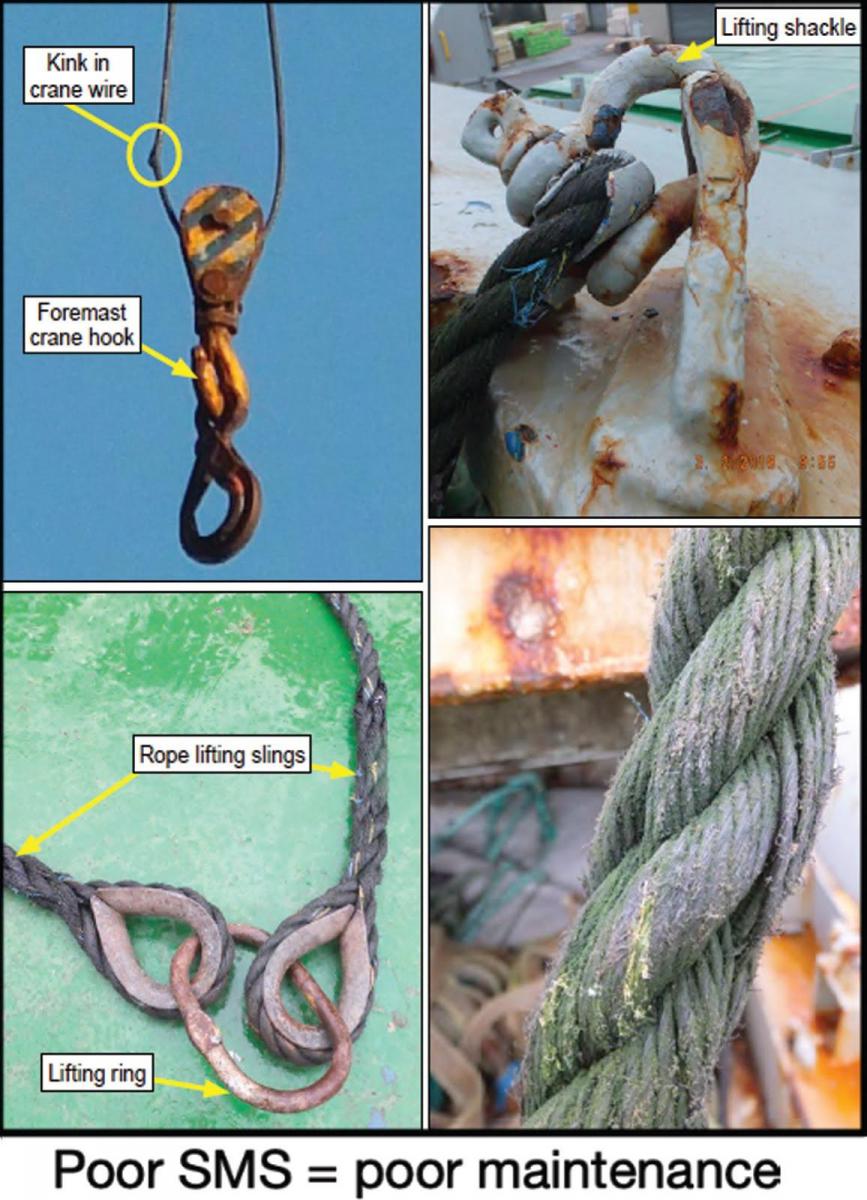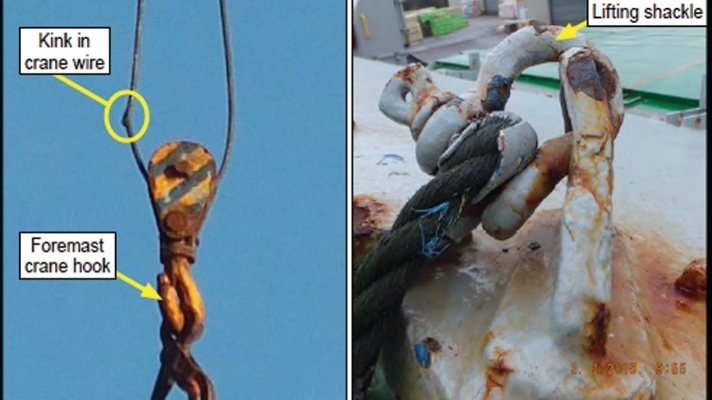Climbing the inside of a hatch cover is never a good idea. A cook-deckhand lost his life trying to do just that in the absence of a mature vessel Safety Management System. In addition, alcohol was in play.
The incident was covered by the latest Mars Reports compiled by The Nautical Institute. A transcript of the incident:
 A general cargo vessel was berthed and stevedores were discharging the vessel’s cargo of packaged timber from the holds. Once the discharging of cargo had been completed a dockside crane was used to lift the ship’s cargo slings back on board. Deck crew, including the cook-deckhand who had come forward to announce that lunch was ready, decided to stow the slings in the forecastle stowage space before eating.
A general cargo vessel was berthed and stevedores were discharging the vessel’s cargo of packaged timber from the holds. Once the discharging of cargo had been completed a dockside crane was used to lift the ship’s cargo slings back on board. Deck crew, including the cook-deckhand who had come forward to announce that lunch was ready, decided to stow the slings in the forecastle stowage space before eating.
Two officers, an AB and the cook-deckhand began the work. The cook-deckhand walked around the starboard side of the open stowage space hatch cover and the AB then walked around the port side. Each then removed the locking pin from the hatch cover hinge closest to them. Then, as the crane hook was being lowered, the cook-deckhand climbed up the inside of the hatch cover, using the framing as hand and foot holds, and reached up to grab the lifting slings. As he did so the hatch cover fell forward, trapping him between the hatch cover and the hatch coaming.
The other attending crew tried desperately to manually lift the hatch cover to release the victim, but it was too heavy. The alarm was raised and the dockside crane driver immediately swung his crane jib back over the forecastle. The hatch cover was quickly raised by the dockside crane and the victim was lifted, unconscious, onto the deck where he received first aid.
Paramedics soon arrived on board, but were unable to revive the victim and he was declared dead at the scene. After the accident, the deck crew were subject to onboard alcohol breath testing by the vessel’s master, in accordance with the company’s drug and alcohol policy. The results for each crew member were negative. However, a post-mortem toxicology test identified that the victim had a blood alcohol level of 75mg/100ml.
Report Analysis and Findings
Some of the report’s analysis and findings are as follows:
- It was not appropriate to require crew to climb onto hatch coamings and squeeze into tight spaces, or to walk across uneven surfaces and climb up the inside of the hatch cover when opening and closing the forecastle stowage space. Had this operation been thoroughly reviewed, alternative solutions could have been identified and put in place.
- The stowage space hatch cover fell on top of the victim because he climbed on it after its locking pins had been removed. This action was the result of inadequate procedures.
- The vessel’s Safety Management System (SMS) was immature. Risk assessments had not been conducted for some routine deck operations, a safe system of work for opening and closing the stowage space cover had not been developed. Additionally, maintenance routines were not in place for lifting appliances.
- Factors that might also have influenced the victim’s actions included a sense of urgency and the effects of alcohol.
- The practice of climbing up the inside of the opened stowage space hatch cover was inherently unsafe and reflected the weak safety culture that existed aboard the vessel.
Lessons Learned
- Identify hazards for work routines and either “engineer out” those hazards or establish procedures to mitigate risks.
- A strong safety culture on board takes many forms. They include zero tolerance for alcohol and an awareness that tasks must be performed in a timely fashion but without undue haste. Poor maintenance, on the other hand, is often a symptom of a weak safety culture.
Mars Reports
This is one of the May Mars Reports, originally published as Mars 201938, that are part of Report Number 320. A selection of this Report has also been published in SWZ|Maritime’s July/August issue.
Submit a Mars Report
More reports are needed to keep the scheme interesting and informative. All reports are read only by the Mars coordinator and are treated in the strictest confidence. To submit a report, please use the Mars report form and send it to mars@nautinst.org.








